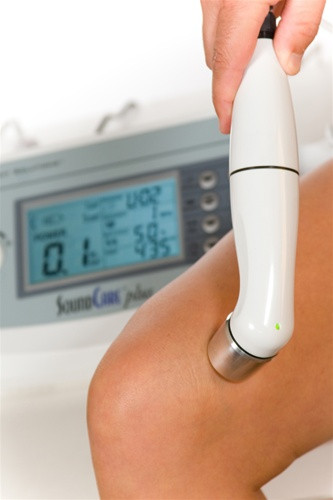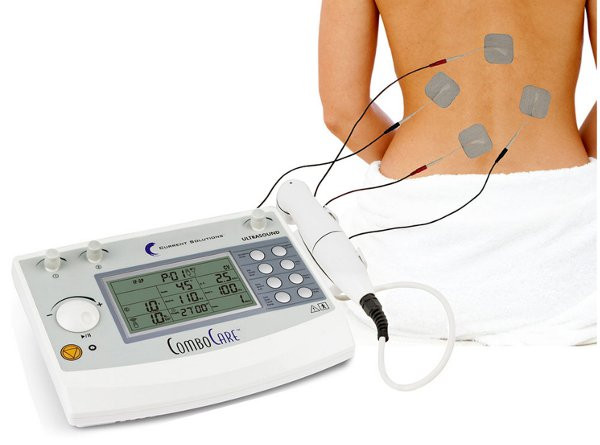 2nd May 2017
2nd May 2017
Common Causes and Treatments for Myofascial Pain Syndrome
Myofascial pain syndrome refers to a chronic pain disorder that affects the body’s soft tissues and muscles and when triggered causes pain and inflammation. Myofascial pain can be limited to local areas, but many times there is referred pain from trigger points which can radiate to surrounding areas and limbs. Myofascial pain syndrome can be limited to one group of muscles or many, as well as affecting the fascia and connective tissue that covers these muscles. When myofascial syndrome causes trigger point pain, there can be tenderness along a path of points following the length of a specific muscle or tissue. When these trigger points are active within a muscle, it can cause the entire muscle to become reactive, shortened, painful, weak, and can hinder range of motion of the area.

There are two different scenarios that can stimulate Myofascial trigger points. Myofascial points can have a twitch response, so that when activated with pressure, you can see and feel the muscle twitch. In this scenario, the pain refers away from the trigger point and is considered an “active” myofascial point. The second scenario involves “latent” trigger points that are dormant, but can become active with injury or trauma.
Causes of myofascial pain include:
- Injury to the spinal discs
- Low energy or fatigue
- Lack of activity
- Trauma or stress
- Other medical conditions
Stress is an all-encompassing category for causing myofascial pain syndrome. Myofascial pain syndrome can occur after repetitive stress to particular muscles when a muscle has been repeatedly contracted from repetitive motions used at work, hobbies, stress-related muscle tension, or poor postures. Or stress-related issues can refer to emotional upsetting circumstances, behavioral contributing factors, and concomitant diagnoses which can all culminate in myofascial pain syndrome. And finally, stress can refer to any stress-induced activity like clenching or grinding of teeth, holding in the stomach, shoulders or low back, and clenching of the buttock or pelvic floor.
The following medical conditions are at a higher risk for developing secondary myofascial pain syndrome.
- Fibromyalgia
- Temporomandibular disorder (TMD/TMJ dysfunction)
- Irritable bowel syndrome (IBS)
- Interstitial cystitis, endometriosis
- Chronic fatigue syndrome
- Chronic pelvic pain
- Vulvodynia
- Insomnia
- Depression
Medical management of myofascial pain syndrome includes physical therapy. From evaluation to treatment, several physical therapy modalities can be used to effectively treat myofascial pain patients and return them to pain-free function.
The Top 10 Techniques for Treating Myofascial Pain Syndrome
- Evaluation: In addition to understanding medical history, it’s important to discover any functional deficits or limitations. Understanding the extent of dysfunction or limitations begins with a thorough postural, movement pattern, and gait analysis, with a complete assessment of problem areas. These complaint areas are then assessed for range of motion, flexibility, and joint mobility using handheld dynamometers, goniometers and sit and reach box tests.
- Manual Therapy: Careful palpation of the local areas of complaint are needed to identify specific trigger points (and the radiating areas) and local tender points caused by Myofascial pain syndrome. Once identified, treatment will focus on resolving the myofascial trigger points, decreasing local pain, and restoring function.
- Biofeedback: A study published in Behavior Therapy found that biofeedback as a part of relaxation therapy help patients with myofascial pain to reduce muscular tension and experience less subjective pain. Biofeedback is particularly good for patients with long-standing myofascial pain as an oral pain medication alternative when combined with other treatments like ultrasound therapy, cold laser and TENS (transcutaneous electrical nerve stimulation).
- Ultrasound Therapy:
 Therapeutic ultrasound is beneficial because it can not only treat larger muscle groups, but with a smaller soundhead applicator (1cm or 5 cm) it can target trigger points. A double-blind study published in The Turkish Society of Algology found that ultrasound therapy was able to significantly reduce pain, but also reduced depression levels in patients with myofascial pain. Many ultrasound machines come with both a 1 and 5 cm soundhead and something like the SoundCare Plus Professional Ultrasound would provide a lot of versatility for treating patients.
Therapeutic ultrasound is beneficial because it can not only treat larger muscle groups, but with a smaller soundhead applicator (1cm or 5 cm) it can target trigger points. A double-blind study published in The Turkish Society of Algology found that ultrasound therapy was able to significantly reduce pain, but also reduced depression levels in patients with myofascial pain. Many ultrasound machines come with both a 1 and 5 cm soundhead and something like the SoundCare Plus Professional Ultrasound would provide a lot of versatility for treating patients. - TENS (transcutaneous electrical nerve stimulation): Another double-blind study, this time published in the International Association for the Study of Pain found that just 10 minutes of TENS treatment was able to significantly reduce pain levels in both local and trigger point myofascial pain. Portable TENS units can also be available for a patient’s use at home in order to help them manage their long-term pain.
- Cold Compression Therapy: Cold compression therapy is a great modality to use to target acute, local and trigger point pain for myofascial syndrome patients. With the variety of wraps available with cold-compression devices, it’s possible to target every part of the body: from shoulders to ankles.
- Heat therapy: Heat therapy in the form of warm water whirlpool therapy and paraffin therapy can be used to reduce tenderness and improve range of motion in the joints. This modality is great to use with therapeutic exercise in order to improve mobility during movement.
- Low-Level Laser Therapy: Low-Level Laser therapy is another great modality to combine with therapeutic exercise, particularly stretching (both passive and active). A study published in Lasers in Surgery and Medicine found that the combination of low-level laser therapy and therapeutic exercise was able to reduce local pain, trigger points with the majority of patients maintaining positive results at their 3-week follow-up visit.
- Therapy Bands: Re-education of movement and posture using stretching and strengthening exercises are an important component in successfully treating Myofascial syndrome patients. Therapeutic bands are a great tool to use for strengthening because they can offer varying strengths of resistance to accommodate different strength levels, can increase resistance as needed and has less negative impact on the joints like weights or exercise equipment does.
- Relaxation: Myofascial syndrome pain reduction is correlated to succesfull stress management. Meditation, yoga, Qi-gong, and deep breathing methods are very helpful for long-term management of Myofascial syndrome.
Myofascial pain syndrome is a chronic pain condition which can reduce function in daily activities, negatively impact sleep, the ability to work and increase the risk of depression. Risks of long-term use of oral pain medication have been long documented. Physical therapy and the appropriate treatment modalities can help treat a myofascial syndrome patient’s immediate needs and help them function long-term.







